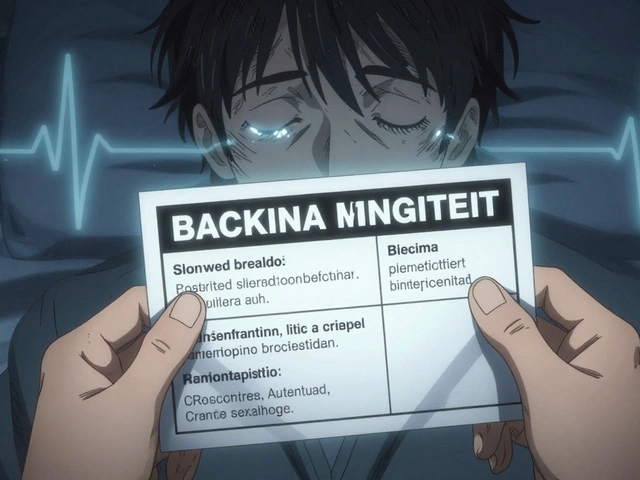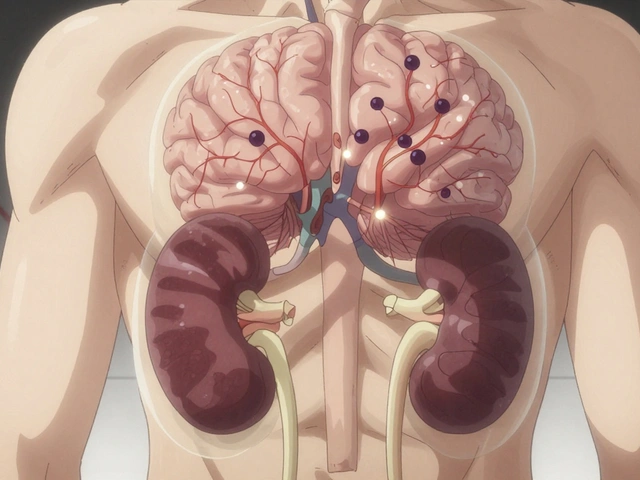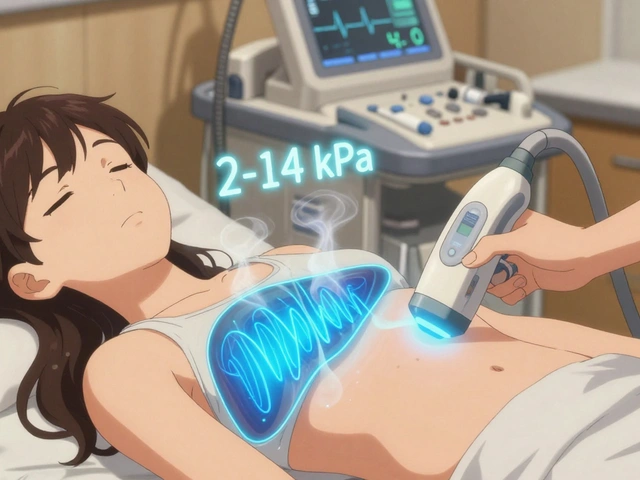What Are Corrective Actions and Why Do They Matter?
When a factory produces a batch of defective parts, stopping the line and throwing out the bad units isn’t enough. That’s a correction-a quick fix. A corrective action goes deeper. It asks: Why did this happen? And then it changes the system so it doesn’t happen again.
Manufacturers don’t just fix mistakes. They fix the reasons behind them. This isn’t optional in regulated industries like medical devices, pharmaceuticals, or aerospace. The FDA, ISO, and other regulators require documented proof that companies aren’t just patching problems-they’re eliminating them. Without proper corrective actions, companies risk shutdowns, recalls, and costly fines.
Here’s the reality: 61% of manufacturers fail because they treat symptoms, not causes. A machine overheats? They add a fan. But if the real issue is a worn bearing that’s been ignored for months, the fan won’t help. Corrective action forces teams to dig into the root cause-before the next batch goes out.
The Six-Step Process Behind Every Effective Corrective Action
There’s no magic formula, but there is a proven structure. Every strong corrective action follows six steps, backed by ISO 13485, FDA 21 CFR Part 820, and cGMP standards.
- Identification: A problem is flagged-through inspection, customer complaint, or automated monitoring. In a medical device plant, this could be a batch of syringes with inconsistent fill volumes.
- Evaluation: How serious is it? Is it a minor deviation or a safety risk? Companies use risk scoring tools to categorize issues. A defect affecting patient safety gets top priority.
- Root Cause Analysis: This is where most fail. Teams use tools like the 5 Whys or Fishbone diagrams. Why did the syringe fill vary? Because the pump pressure fluctuated. Why? Because the valve wasn’t calibrated. Why? Because calibration wasn’t scheduled. Why? Because no one owned the task. Why? Because the work order system didn’t track maintenance.
- Planning: A Corrective Action Plan (CAP) is written. It includes: who will do what, by when, and how success will be measured. No vague statements like “improve process.” It must say: “Replace valve X, recalibrate pump every 500 cycles, update maintenance log in ERP system by Oct 15.”
- Implementation: The plan is executed. This isn’t just about fixing hardware. It’s about updating training, changing checklists, or rewriting SOPs. Teams must document every change.
- Review: After 3 production cycles, data is checked. Did the defect rate drop by over 50%? Is the new calibration schedule being followed? If not, the action isn’t complete. Verification requires statistical proof-sample sizes of at least 30 units are standard.
Corrective Action vs. Correction vs. Preventive Action
People mix these up-and it’s costly. Here’s how they differ:
- Correction: Immediate fix. Stop the line. Scrap the batch. Re-work the part. It’s fast, but temporary.
- Corrective Action: Fixes the cause of an existing problem. Changes the system. Requires documentation and verification.
- Preventive Action: Stops something from happening before it occurs. Example: If 5 similar defects happened last quarter, you change the machine maintenance schedule-even if no current failure exists.
According to Cognidox’s 2023 analysis, 68% of quality failures come from confusing these three. A company might spend $50,000 on scrap and rework (correction) and never realize they could’ve spent $5,000 on a sensor upgrade (preventive action) to avoid it entirely.
In pharmaceutical manufacturing, cGMP rules are strict: Only critical deviations (those affecting safety or efficacy) require full corrective actions. Minor issues-like a mislabeled box-can be handled as corrections. But in medical devices, even small deviations can trigger CAPA if they could affect patient outcomes.

Why Most Corrective Actions Fail (And How to Avoid It)
It’s not that companies don’t try. It’s that they cut corners. Here’s what goes wrong:
- Skipping root cause analysis: 57% of failed CAPAs cited by the FDA in 2022 didn’t dig deep enough. They blamed “operator error” instead of asking why the operator wasn’t trained or why the machine wasn’t monitored.
- No verification: 38% of corrective actions were closed without proving they worked. If you don’t measure the outcome, you don’t know if it’s fixed.
- Too much paperwork: One Reddit user said their CAPA system generated 47 pages per issue. That slows things down. People avoid reporting problems because they fear the paperwork.
- No ownership: If no one is named as responsible, nothing gets done. Accountability is non-negotiable.
The fix? Simplify. Use digital tools. One manufacturer reduced documentation time by 41% by integrating CAPA into their production software. When a sensor detects a deviation, it auto-creates a CAPA ticket, assigns it to the right engineer, and tracks progress in real time.
How Technology Is Changing Corrective Actions
Old-school CAPA systems lived in binders. Today, they’re digital-and smarter.
AI-powered tools now analyze production data to spot patterns before humans even notice. In one case, an AI flagged a 0.3% increase in dimensional variation across 12 machines. The team found a common calibration drift in a shared component-something no one had connected before. Investigation time dropped by 52%.
Blockchain-based audit trails are gaining traction in medical device manufacturing. Every change to a CAPA document is timestamped and locked, making tampering impossible. The FDA’s 2023 Digital Health Innovation Plan encourages this, and 41% of device makers are already piloting it.
By 2027, Gartner predicts 65% of manufacturers will use predictive CAPA systems. These systems don’t wait for a defect. They use real-time data to predict when a machine is likely to fail-and trigger a preventive action before the product is even made.

What Success Looks Like
Real results aren’t about perfect reports. They’re about fewer defects, happier customers, and fewer regulatory headaches.
One automotive supplier reduced defect rates from 2.8% to 0.4% in 18 months using a strict CAPA process. They assigned each issue to a cross-functional team-engineering, production, and quality worked together. They tracked progress on a live dashboard. No one could close a CAPA without showing data.
Medical device firms with strong CAPA systems see 27% fewer field actions and 34% less regulatory scrutiny. That means fewer inspections, less stress, and more time making products.
Cost savings are real too: companies report 19% lower operational costs from reduced waste, 37% less downtime, and 28% higher customer satisfaction.
Getting Started: What You Need to Do Today
If your company doesn’t have a formal CAPA system, start small. Pick one recurring problem. Don’t try to fix everything.
- Find the most common defect or complaint.
- Assemble a team of 3-5 people from different areas-production, maintenance, quality.
- Use the 5 Whys to dig into the cause. Write it down.
- Define one clear action: “Replace sensor model Y by Nov 30,” not “Improve sensor reliability.”
- Assign one person to own it.
- Measure the result after 2 weeks. Did it drop?
You don’t need fancy software. You need discipline. The goal isn’t to fill out forms. It’s to stop the same mistake from happening again.
Final Thought: Quality Isn’t an Inspection-it’s a Culture
Corrective actions aren’t about catching bad products. They’re about building a culture where people feel safe reporting problems, where teams work together to fix systems, and where leadership actually listens.
The best manufacturers don’t wait for regulators to push them. They know that every defect costs money, time, and trust. And they fix the system-not just the symptom.






15 Comments
Ryan Masuga
November 10, 2025This is actually one of the clearest breakdowns of CAPA I’ve seen. So many companies think fixing the symptom is enough. But you’re right - it’s about changing the system. I’ve seen teams spend months on reworks while the root cause sits there like a ticking bomb.
Start small. Pick one thing. Don’t try to boil the ocean.
William Priest
November 11, 2025LMAO 61% fail? Bro that’s because most of em are using 2005 Excel sheets and calling it a 'CAPA database'. I work at a med device co and our system generates 47 pages per ticket. No one reads it. We just click 'approve' and move on. Real talk: if your corrective action needs a 12-page PDF to explain how to tighten a bolt, you’ve already lost.
Jennifer Bedrosian
November 12, 2025OMG I LOVE THIS POST SO MUCH LIKE I CRIED WHEN I READ THE PART ABOUT CULTURE BECAUSE MY BOSS JUST FIRED THE QUALITY TEAM LAST WEEK FOR BEING TOO 'SLOW' AND NOW WE HAVE 3 RECALLS IN A MONTH AND NO ONE KNOWS WHY HELP
Abigail Chrisma
November 12, 2025I’ve worked in pharma and aerospace, and honestly? The most successful teams aren’t the ones with the fanciest software. They’re the ones where the floor tech feels safe saying 'hey, this sensor is acting weird again.' That’s the real win. No audit can measure that kind of trust.
Start with psychological safety. The rest follows.
Rachel Puno
November 14, 2025YES YES YES this is why I love working in manufacturing. It’s not glamorous but when you fix a process so it doesn’t break again? That’s magic. I had a guy last month who kept saying 'it’s operator error' - so we watched him work. Turns out the tool he was using had a 0.5mm gap no one documented. We fixed the tool. Defects dropped 89%. No blame. Just fix the damn thing.
Clyde Verdin Jr
November 15, 2025This is why American manufacturing is dying. We spend 10x more time documenting than fixing. In China, they just slap a new part on and move on. No forms. No meetings. No 'verification cycles.' And guess what? Their defect rate is LOWER. This whole CAPA thing is just corporate theater. 💀
Key Davis
November 16, 2025While the sentiment is commendable, one must emphasize the regulatory imperative under 21 CFR Part 820.30. The requirement for documented root cause analysis and verification is not merely best practice - it is codified law. Failure to adhere may constitute a Class I recall trigger. The cultural component is vital, but without procedural rigor, even the most empathetic teams remain non-compliant.
Cris Ceceris
November 17, 2025I keep thinking about how we treat mistakes like failures instead of data points. What if we stopped seeing defects as enemies and started seeing them as teachers? The machine didn’t fail because someone was lazy. It failed because the system didn’t support the person. Maybe the real corrective action is trusting people more than paperwork.
Brad Seymour
November 18, 2025I work in the UK and we’ve been doing this for years - no drama, just simple digital tickets linked to machine logs. If a sensor spikes, it auto-creates a CAPA, assigns it to the maintenance lead, and emails the shift supervisor. We don’t need 47 pages. We need one clear action. And yeah, we’ve cut our downtime by 40%. Simple works.
Malia Blom
November 20, 2025Okay but let’s be real - if you’re using 5 Whys in 2024, you’re already behind. AI can detect root causes in milliseconds. You’re not fixing systems. You’re doing archaeology. And let’s not pretend 'operator error' isn’t just corporate-speak for 'we didn’t train them or give them the right tools.' We’re all just playing pretend with process.
Edward Weaver
November 20, 2025This is why we need to stop letting these so-called 'quality nerds' run everything. We’re not in a university seminar. We’re in a factory. If a part’s bad, scrap it. If the machine’s broken, fix it. Stop writing novels. The Chinese, the Germans, the Japanese - they don’t waste time with 'verification cycles.' They just make good stuff. America’s overthinking itself into oblivion.
Lexi Brinkley
November 21, 2025I’m so proud of this post 😭💖 I work in med devices and we just got our FDA audit score up to 98% because we started using AI to predict failures before they happen. My boss cried. I cried. We all cried. 🤍✨ #CAPARevolution #QualityIsLove
Kelsey Veg
November 22, 2025This is why I hate my job. We had a defect last week and the CAPA took 3 weeks to close because someone in compliance wanted a signed affidavit from the janitor who cleaned the machine. Meanwhile the machine kept breaking. I swear to god I’m gonna quit and open a taco truck.
Alex Harrison
November 23, 2025i just wanted to say i read this whole thing and honestly its the most helpful thing i've seen all year. we started doing the 5 whys on our assembly line last month and we already caught a bad batch before it shipped. no fancy software, just a whiteboard and a coffee break. thanks for this.
Jay Wallace
November 25, 2025This is why the U.S. manufacturing sector is being outmaneuvered globally. You’re glorifying bureaucracy. You think writing a 6-step process makes you better than China? They don’t care about your 'verification cycles.' They care about output. They care about speed. They care about profit. And guess what? They’re winning. This is not innovation. This is paperwork theater. 🇺🇸❌